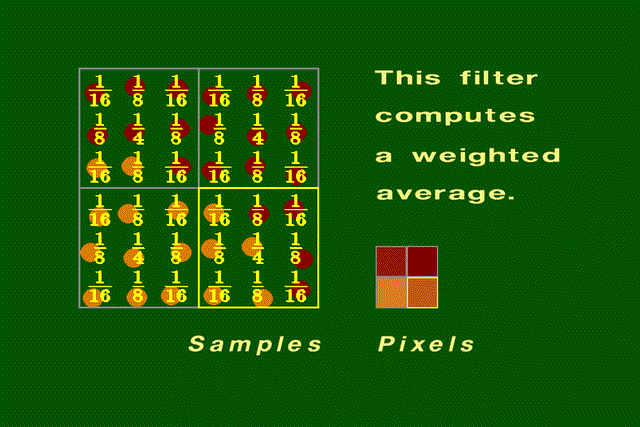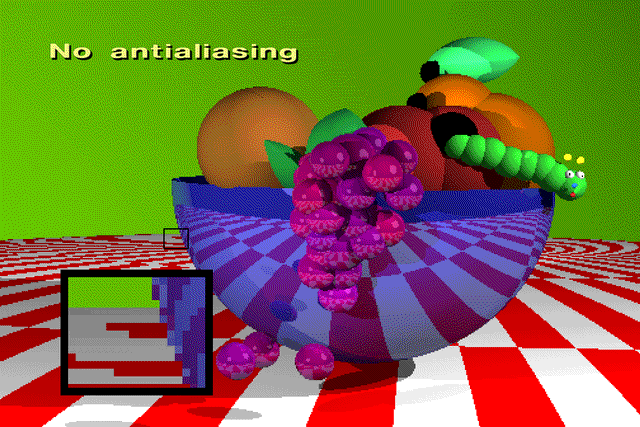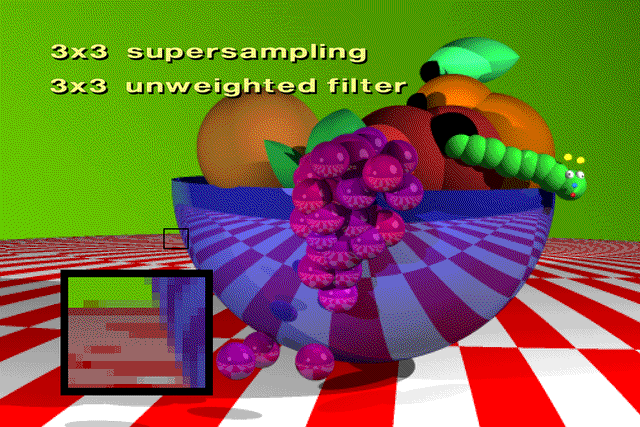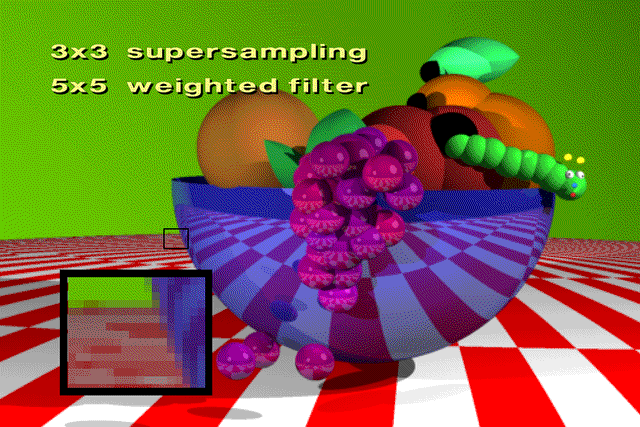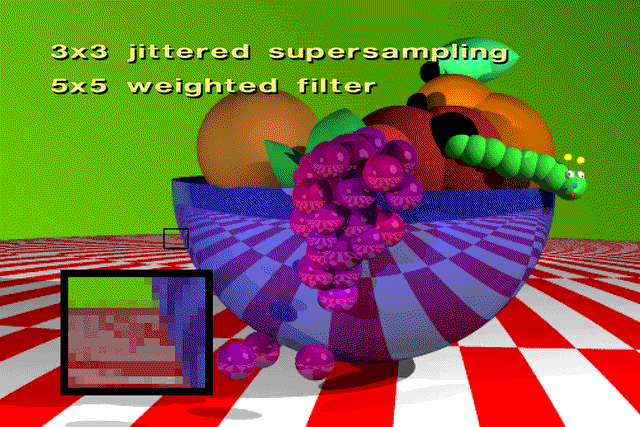Overview of Aliasing in Computer Graphics: Part 3
Using a filter to compute a pixel's color
On the left is a group of samples that will be combined to produce pixel colors. Some of the samples are orange, and some are red. The superimposed numbers are the weights from the filter shown in the last slide. The highlighted group of samples on the left are combined using the filter to produce the color of the highlighted pixel on the right.
Example Images
Students incorporated several postfiltering techniques in a raytracer. All of the following raytraced images were rendered at a resolution of 512x342.
No antialiasing
3x3 supersampling, 3x3 unweighted filter
The students combined 1536x1026 regularly-spaced samples using an unweighted filter. Each of the nine samples taken for a pixel had equal influence on the pixel's computed color.
3x3 supersampling, 5x5 weighted filter
The samples are regularly spaced. Here's the weighted filter used in this rendering: 1/81 2/81 3/81 2/81 1/81 2/81 4/81 6/81 4/81 2/81 3/81 6/81 9/81 6/81 3/81 2/81 4/81 6/81 4/81 2/81 1/81 2/81 3/81 2/81 1/81 This filter allows samples taken from neighboring pixels to influence the color of the current pixel. The result is softer profiles and edges.
3x3 supersampling, jittered samples, 3x3 weighted filter
Each sample is perturbed by a random amount in x and y. The random amount is constrained to be less than one sixth of the pixel's width.
Credits:
Tony Loza, Cynthia Gryniewicz and David Abramoske wrote the raytracing package that created slides 48-51. The raytracer is written in 'C' and runs on several Unix platforms. David incorporated the postfiltering methods, and Cynthia created the model. Special thanks to Jenny Morlan for her invaluable assistance in designing the slides. Thanks also to Ed Allemand, Steve Cunningham, Henry Harr, Steve Jost, Warren Krueger, Glenn Lancaster, Charlotte Williams and the 1992 Winter Quarter "Environmental Graphics" class for viewing the slides and making many helpful suggestions.
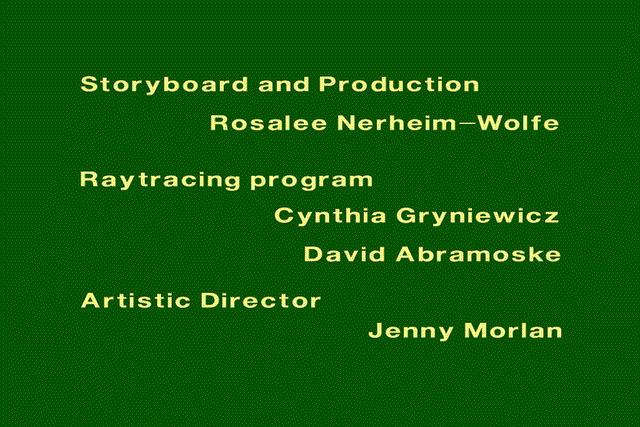
[ Go to Part 2 ] [ Go to Part 1 ]
